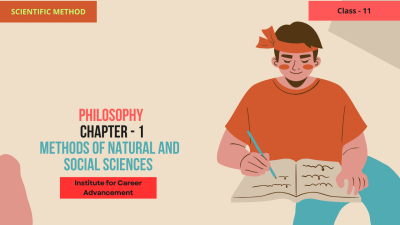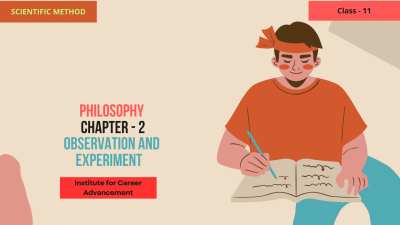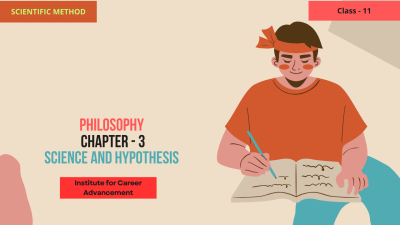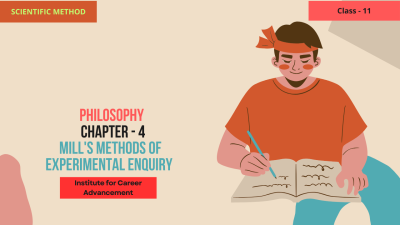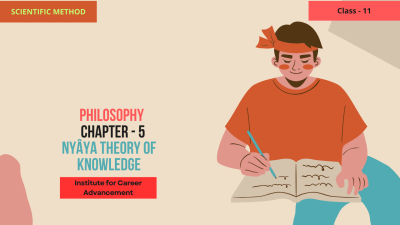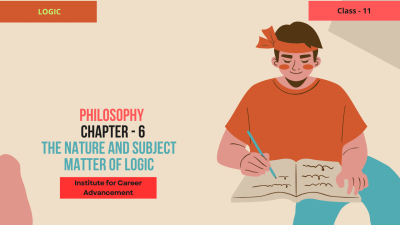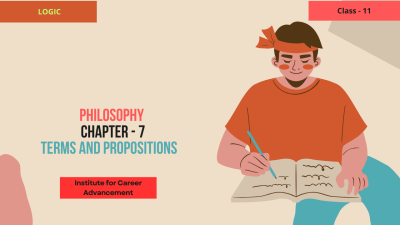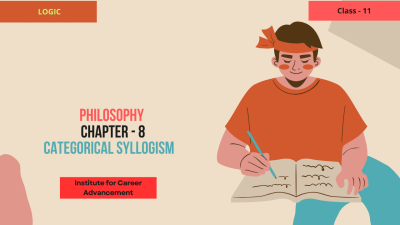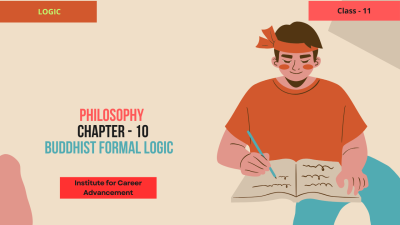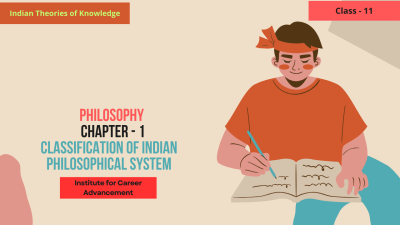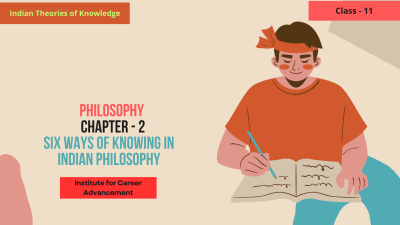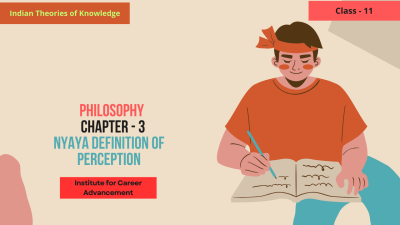Course description
Aristotle's Virtue Ethics is a key concept in Class 12 philosophy that focuses on the development of good character and moral virtues rather than strictly following rules or focusing on consequences. It is a central part of the study of ethics and moral philosophy, helping students understand Aristotle's views on achieving the good life through the cultivation of virtues.
Course Overview:
1. Introduction to Virtue Ethics:
Objective: To introduce the fundamental concepts of Aristotle's Virtue Ethics and how it differs from other ethical theories.
Key Concepts:
Virtue Ethics: A moral theory that emphasizes the development of good character traits or virtues (such as courage, honesty, and generosity) in achieving moral excellence.
The Good Life: Aristotle’s idea that the ultimate goal of human life is to achieve eudaimonia, often translated as "flourishing" or "living well."
Focus on Character: Unlike deontological or consequentialist theories, Virtue Ethics focuses on the character and intentions of the individual, rather than rules or outcomes.
2. The Concept of Eudaimonia (Flourishing):
Objective: To explore the central idea of eudaimonia and its role in Aristotle’s ethical framework.
Key Concepts:
Eudaimonia: Aristotle's concept of the highest human good; living a life of fulfillment, flourishing, and well-being through virtuous activity.
Function Argument: The idea that everything has a purpose or function, and the function of humans is to reason and live according to rational principles.
Living in Accordance with Reason: Achieving eudaimonia requires aligning one’s life with rational thought, which helps cultivate virtues.
3. The Role of Virtue in Aristotle’s Ethics:
Objective: To delve into the role of virtues in leading a morally good life and how they contribute to eudaimonia.
Key Concepts:
Virtues of Character: The habits or traits that help individuals act in morally good ways, such as courage, generosity, and honesty.
Doctrine of the Mean: The idea that virtues lie between two extremes—excess and deficiency. For example, courage is the mean between recklessness (excess) and cowardice (deficiency).
Acquiring Virtue: Virtues are acquired through practice, habit, and education, rather than innate qualities.
4. The Function of Practical Wisdom (Phronesis):
Objective: To understand practical wisdom (or phronesis) and its importance in guiding virtuous action.
Key Concepts:
Phronesis: A key virtue in Aristotle's ethics, practical wisdom involves the ability to make the right decisions in complex situations.
Moral Reasoning: The role of practical wisdom in choosing the right course of action by understanding the context, balancing emotions, and applying rational judgment.
Intellectual vs. Moral Virtue: Distinguishing between virtues of character (moral virtues) and intellectual virtues like wisdom and understanding.
5. The Development of Virtue:
Objective: To explore how individuals develop virtues and the importance of role models and community in cultivating moral character.
Key Concepts:
Habit Formation: Aristotle emphasizes the role of repeated actions in forming virtuous habits, suggesting that doing good deeds leads to becoming a good person.
The Importance of Education: Education, including moral education, plays a significant role in shaping a virtuous character.
Role Models: Influential figures in one’s life, such as parents or mentors, can guide the development of virtues by providing examples of virtuous living.
6. The Golden Mean and Balance in Virtue Ethics:
Objective: To analyze Aristotle’s concept of the Golden Mean and its application in balancing extremes of behavior.
Key Concepts:
Golden Mean: The idea that every virtue is a balance between two extremes (for example, generosity is a balance between prodigality and stinginess).
Application to Life: How individuals can apply the Golden Mean in practical life by avoiding extremes and cultivating moderation.
7. Criticisms of Virtue Ethics:
Objective: To examine the key criticisms of Aristotle's Virtue Ethics.
Key Concepts:
Cultural Relativism: The criticism that virtues may vary across cultures, leading to different conceptions of what constitutes virtuous behavior.
Lack of Clear Rules: Unlike deontological or consequentialist theories, Virtue Ethics does not provide a set of clear-cut rules, making it harder to apply in some situations.
Overemphasis on Character: Critics argue that focusing solely on character development may overlook the importance of consequences and intentions in ethical decision-making.
The study of Aristotle’s Virtue Ethics provides students with a comprehensive understanding of ethics that emphasizes the importance of character and moral development. It encourages a shift from rule-based thinking to an approach focused on cultivating virtues and living a flourishing life. This course equips students to apply these timeless concepts to modern moral challenges, fostering critical thinking and ethical reflection.
অ্যারিস্টটলের 12 তম শ্রেণির দর্শনের একটি মূল ধারণা হল ভর্চু এথিক্স যা কঠোরভাবে নিয়ম অনুসরণ বা পরিণতির দিকে মনোনিবেশ করার পরিবর্তে ভাল চরিত্র এবং নৈতিক গুণাবলীর বিকাশের উপর দৃষ্টি নিবদ্ধ করে। এটি নৈতিকতা এবং নৈতিক দর্শনের অধ্যয়নের একটি কেন্দ্রীয় অংশ, যা শিক্ষার্থীদের গুণাবলীর চাষের মাধ্যমে ভাল জীবন অর্জনের বিষয়ে অ্যারিস্টটলের দৃষ্টিভঙ্গি বুঝতে সহায়তা করে।
কোর্স ওভারভিউঃ
1টি। সদ্গুণ নৈতিকতার পরিচিতিঃ
উদ্দেশ্যঃ অ্যারিস্টটলের সদ্গুণ নীতিশাস্ত্রের মৌলিক ধারণাগুলি এবং এটি কীভাবে অন্যান্য নৈতিক তত্ত্ব থেকে আলাদা তা প্রবর্তন করা।
মূল ধারণাগুলিঃ
সদ্গুণ নীতিশাস্ত্রঃ একটি নৈতিক তত্ত্ব যা নৈতিক উৎকর্ষ অর্জনে ভাল চরিত্রের বৈশিষ্ট্য বা গুণাবলীর (যেমন সাহস, সততা এবং উদারতা) বিকাশের উপর জোর দেয়।
দ্য গুড লাইফঃ অ্যারিস্টটলের ধারণা যে মানব জীবনের চূড়ান্ত লক্ষ্য হল ইউডাইমোনিয়া অর্জন করা, যা প্রায়শই "সমৃদ্ধ" বা "ভাল জীবনযাপন" হিসাবে অনুবাদ করা হয়।
চরিত্রের উপর ফোকাস করুনঃ ডিওন্টোলজিকাল বা ফলস্বরূপবাদী তত্ত্বের বিপরীতে, সদ্গুণ নৈতিকতা নিয়ম বা ফলাফলের পরিবর্তে ব্যক্তির চরিত্র এবং উদ্দেশ্যের উপর দৃষ্টি নিবদ্ধ করে।
2. ইউডাইমোনিয়ার ধারণা (সমৃদ্ধি)
উদ্দেশ্যঃ ইউডাইমোনিয়ার কেন্দ্রীয় ধারণা এবং অ্যারিস্টটলের নৈতিক কাঠামোতে এর ভূমিকা অন্বেষণ করা।
মূল ধারণাগুলিঃ
ইউডাইমোনিয়াঃ অ্যারিস্টটলের সর্বোচ্চ মানব কল্যাণের ধারণা; পুণ্য কর্মকান্ডের মাধ্যমে পরিপূর্ণতা, সমৃদ্ধি এবং সুস্থতার জীবনযাপন।
ফাংশন আর্গুমেন্টঃ এই ধারণা যে সবকিছুরই একটি উদ্দেশ্য বা কার্য রয়েছে এবং মানুষের কাজ হল যুক্তিসঙ্গত নীতি অনুসারে যুক্তি করা এবং জীবনযাপন করা।
যুক্তির সঙ্গে সামঞ্জস্য রেখে জীবনযাপন করাঃ ইউডায়মোনিয়া অর্জনের জন্য একজনের জীবনকে যুক্তিসঙ্গত চিন্তার সাথে একত্রিত করা প্রয়োজন, যা গুণাবলী গড়ে তুলতে সহায়তা করে।
3. অ্যারিস্টটলের নীতিতে সদ্গুণের ভূমিকাঃ
উদ্দেশ্যঃ নৈতিকভাবে ভাল জীবনযাপনে গুণাবলীর ভূমিকা এবং কীভাবে তারা ইউডাইমোনিয়ায় অবদান রাখে তা অনুসন্ধান করা।
মূল ধারণাগুলিঃ
চরিত্রের গুণাবলিঃ এমন অভ্যাস বা বৈশিষ্ট্য যা ব্যক্তিদের নৈতিকভাবে ভাল উপায়ে আচরণ করতে সহায়তা করে, যেমন সাহস, উদারতা এবং সততা।
গড়ের মতবাদঃ এই ধারণা যে গুণ দুটি চূড়ান্ততার মধ্যে রয়েছে-অতিরিক্ততা এবং ঘাটতি। উদাহরণস্বরূপ, সাহস হল বেপরোয়া (অতিরিক্ত) এবং কাপুরুষতার (ঘাটতি) মধ্যবর্তী মাধ্যম।
সদ্গুণ অর্জনঃ গুণাবলী সহজাত গুণাবলীর পরিবর্তে অনুশীলন, অভ্যাস এবং শিক্ষার মাধ্যমে অর্জিত হয়।
4. ব্যবহারিক প্রজ্ঞার কার্যকারিতা (Phronesis)
উদ্দেশ্যঃ ব্যবহারিক প্রজ্ঞা (বা Phronesis) এবং পুণ্য কর্ম পরিচালনায় এর গুরুত্ব বোঝা।
মূল ধারণাগুলিঃ
Phronesis: অ্যারিস্টটলের নীতিশাস্ত্রের একটি মূল গুণ, ব্যবহারিক জ্ঞান জটিল পরিস্থিতিতে সঠিক সিদ্ধান্ত নেওয়ার ক্ষমতা জড়িত।
নৈতিক যুক্তিঃ প্রসঙ্গ বোঝার, আবেগের ভারসাম্য বজায় রাখার এবং যুক্তিসঙ্গত বিচার প্রয়োগের মাধ্যমে সঠিক পদক্ষেপ বেছে নেওয়ার ক্ষেত্রে ব্যবহারিক প্রজ্ঞার ভূমিকা।
বুদ্ধিজীবী বনাম। নৈতিক গুণঃ চরিত্রের গুণাবলী (নৈতিক গুণাবলী) এবং প্রজ্ঞা ও বোঝার মতো বুদ্ধিবৃত্তিক গুণাবলীর মধ্যে পার্থক্য করা।
5. সদ্গুণের বিকাশঃ
উদ্দেশ্যঃ ব্যক্তিরা কীভাবে গুণাবলী বিকাশ করে এবং নৈতিক চরিত্র বিকাশে রোল মডেল এবং সম্প্রদায়ের গুরুত্ব অন্বেষণ করা।
মূল ধারণাগুলিঃ
অভ্যাস গঠনঃ অ্যারিস্টটল পুণ্য অভ্যাস গঠনে পুনরাবৃত্ত কর্মের ভূমিকার উপর জোর দিয়েছিলেন, পরামর্শ দিয়েছিলেন যে ভাল কাজ করা একজন ভাল ব্যক্তি হওয়ার দিকে পরিচালিত করে।
শিক্ষার গুরুত্বঃ নৈতিক শিক্ষা সহ শিক্ষা একটি গুণী চরিত্র গঠনে গুরুত্বপূর্ণ ভূমিকা পালন করে।
রোল মডেলঃ একজনের জীবনে প্রভাবশালী ব্যক্তিত্ব, যেমন বাবা-মা বা পরামর্শদাতা, গুণী জীবনযাপনের উদাহরণ দিয়ে গুণাবলীর বিকাশকে গাইড করতে পারেন।
6টি। সদ্গুণ নীতিতে সুবর্ণ অর্থ এবং ভারসাম্যঃ
উদ্দেশ্যঃ অ্যারিস্টটলের গোল্ডেন মিন ধারণা এবং আচরণের চরম ভারসাম্যের ক্ষেত্রে এর প্রয়োগ বিশ্লেষণ করা।
মূল ধারণাগুলিঃ
সুবর্ণ অর্থঃ এই ধারণা যে প্রতিটি গুণ দুটি চূড়ান্ততার মধ্যে একটি ভারসাম্য (উদাহরণস্বরূপ, উদারতা হল অপব্যয় এবং কৃপণতার মধ্যে একটি ভারসাম্য)
জীবনে প্রয়োগঃ কীভাবে ব্যক্তিরা চরমপন্থা এড়ানো এবং সংযম গড়ে তোলার মাধ্যমে ব্যবহারিক জীবনে সুবর্ণ অর্থ প্রয়োগ করতে পারে।
7. সদ্গুণ নৈতিকতার সমালোচনাঃ
উদ্দেশ্যঃ অ্যারিস্টটলের সদ্গুণ নীতিশাস্ত্রের মূল সমালোচনাগুলি পরীক্ষা করা।
মূল ধারণাগুলিঃ
সাংস্কৃতিক আপেক্ষিকতাবাদঃ সমালোচনা যে গুণগুলি সংস্কৃতি জুড়ে পরিবর্তিত হতে পারে, যা গুণী আচরণ গঠন করে তার বিভিন্ন ধারণার দিকে পরিচালিত করে।
স্পষ্ট নিয়মের অভাবঃ ডিওন্টোলজিকাল বা ফলস্বরূপ তত্ত্বগুলির বিপরীতে, সদ্গুণ নীতিশাস্ত্র স্পষ্ট নিয়মের একটি সেট সরবরাহ করে না, যা কিছু পরিস্থিতিতে প্রয়োগ করা কঠিন করে তোলে।
চরিত্রের উপর অতিরিক্ত জোরঃ সমালোচকরা যুক্তি দেন যে শুধুমাত্র চরিত্রের বিকাশের দিকে মনোনিবেশ করা নৈতিক সিদ্ধান্ত গ্রহণে পরিণতি এবং উদ্দেশ্যের গুরুত্বকে উপেক্ষা করতে পারে।
অ্যারিস্টটলের সদ্গুণ নীতিশাস্ত্রের অধ্যয়ন শিক্ষার্থীদের নৈতিকতা সম্পর্কে একটি বিস্তৃত ধারণা প্রদান করে যা চরিত্র এবং নৈতিক বিকাশের গুরুত্বের উপর জোর দেয়। এটি নিয়ম-ভিত্তিক চিন্তাভাবনা থেকে গুণাবলী চাষ এবং একটি সমৃদ্ধ জীবনযাপনের উপর দৃষ্টি নিবদ্ধ করে এমন একটি পদ্ধতির দিকে স্থানান্তরকে উৎসাহিত করে। এই কোর্সটি শিক্ষার্থীদের এই কালজয়ী ধারণাগুলি আধুনিক নৈতিক চ্যালেঞ্জগুলিতে প্রয়োগ করতে, সমালোচনামূলক চিন্তাভাবনা এবং নৈতিক প্রতিফলনকে উৎসাহিত করতে সজ্জিত করে।







